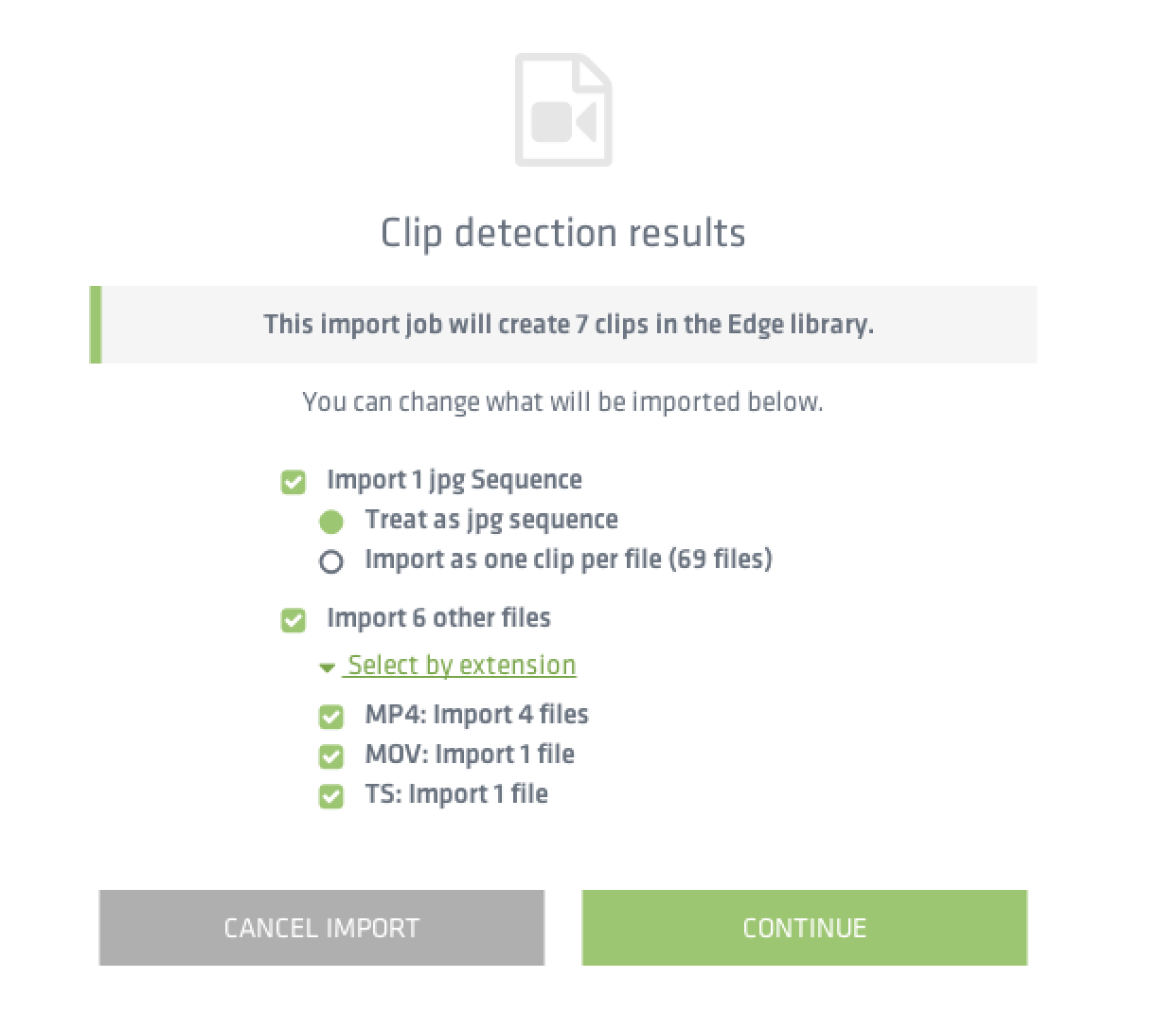Before you can ingest or audiosync material with Edge, you first need to import the files into the local library of Edge. We will show you step by step how to go about this.
1. Select files you would like to process
First of all, make sure you have selected the 'import & backup' app in the toolbar on the left.
Secondly, choose the source you want to import from in Edge. These are the possible options:
- Select a single source folder: this will make one new card with all the files and folders included.
- Select a folder with multiple source folders in it: to use this option, we expect a folder with subfolders in it. For each subfolder, one new card will be made with all the files/folders in it. You could say this option is the same as "a single source folder" but per subfolder.
- Select file: one new card is made with only that file in it.
- Volumes: a volume will be imported as one card.
Thirdly, Edge will ask if you would like to backup the file/folder and ask for a destination. For more details about backing up material, we recommend reading this article.
If you're uploading a folder with images, you can indicate if you would like to treat time lapse videos as separate images or as a sequence.
2. Metadata
Edge will add metadata to the imported cards. Each clip on that card will receive this metadata when it is sent to Flow.
There are two items to discuss here:
- 'Use path part' shows you a dialog that allows you to use folders from that location in the metadata
- 'Required for path' are fields that are configured to construct the path and that need to be filled in. Read more about that here.
3. Job overview
Edge will give you a quick job overview. Hit 'continue' to start the ingest.
4. Complete import
Once you double checked your job overview and hit 'continue', Edge will analyse the media files and import them into the library.







